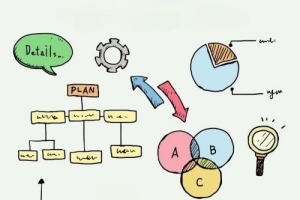What Is Economic Growth?
Hey there! Welcome to the latest episode of Ask an Economist. I’m Joyce Wong from the IMF. And in this series, we take all your questions about thorny economic issues, we break them down, and we give you straight answers, all without the fancy academic speak. So with that, let’s get started.
Today, we’ll be tackling questions about economic growth. What is it? Why is it important? And how is it measured?
What is economic growth?
To put it simply, economic growth is the total increase in the value of all the goods and services that society produces. So, if we say the economy grew by X percent in a year, we are looking at how much more goods like bread and cars, and services like restaurant meals and hotels stays, that an economy produces each year compared to last.
To make this concrete, imagine an economy that only produces cars. In the first year, they produced 1,000 cars, while in the second year they produced 1,050. The real GDP growth in the second year would then be 5%, the 50 extra cars.
Growth can also be negative. If the economy produced 900 cars in the second year, you would have had a negative growth, a 10% decline.
Why does economic growth matter?
Economic growth is important because more production usually means more jobs, higher incomes, and less poverty. It’s not just you can buy more stuff. Growth can lead to bigger investments in businesses, stronger social protection, and more financial security for all citizens, all of which in turn can lead to better living standards.
Small changes in economic growth can lead to massive changes in living standards over time. Let’s consider countries A and B. Every year, Country A grows by one percentage point faster than Country B. In 70 years, the living standard in Country A would be about twice that of Country B.
How is economic growth measured?
Growth is measured by changes in the Gross Domestic Product, or GDP. So one way is to simply add all of the market values of all the goods and services produced in the economy in a year. That way, I can calculate something called the nominal GDP. If I see that nominal GDP is growing 10% year on year, well, that’s useful. But if all the prices in the economy have increased by 10%, all I’m really seeing is inflation.
This is why we also calculate something called real GDP, which means GDP adjusted for inflation. If the nominal GDP grows by 10% and inflation is around 5%, then real GDP growth is 5%.
Now, it’s important to point out, though, that GDP is not a measure of accumulated wealth. An economy can be poor, but it can have high rates of GDP growth. Also, GDP does not tell us anything about how welfare is distributed. The economy may have produced 1,000 cars, but they could have all been bought by one person while the rest got nothing. Lastly, GDP does not reflect economic realities, such as environmental costs. For example, focusing on growth in the number of cars does not account for environmental damage associated with all of those extra cars.
What can governments do to increase economic growth?
A government can do a variety of things to boost economic growth. For example, it can increase spending or lower taxes. Central banks can also lower interest rates to make it cheaper to borrow or invest, which can help boost spending in the short term. But all of this is far from simple. Because higher government spending and lower taxes could also create unsustainable debts. And lower interest rates can lead to higher inflation. This could all lead to lower, not higher, economic growth in the long run.
Going back to our car economy, focusing on just producing more cars at all costs may not necessarily be the best economic strategy overall. To generate long-term, inclusive, and sustainable growth, governments need to go beyond short-term spending and focus on strengthening their institutions, and consistently delivering basic services for their citizens, like education, health, and infrastructure.
With all of these foundations, economic growth can then support inclusion by creating jobs, lifting living standards, and most importantly, ensuring opportunities for all.
That’s all we have time for today. But be sure to continue to send us your questions to AskAnEconomist@IMF.org. And we’ll see you the next time.














